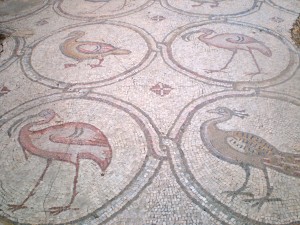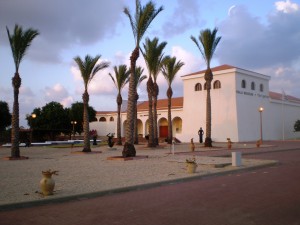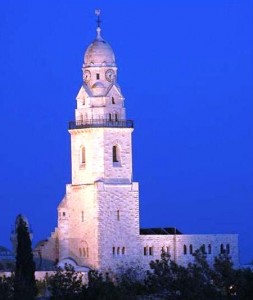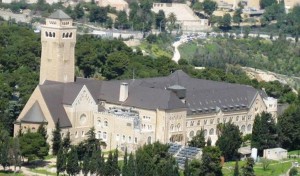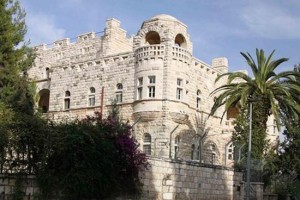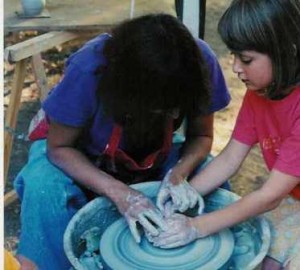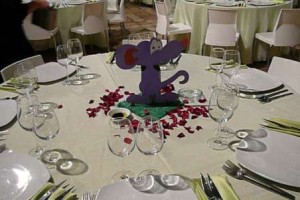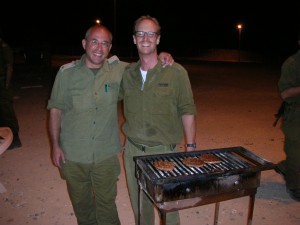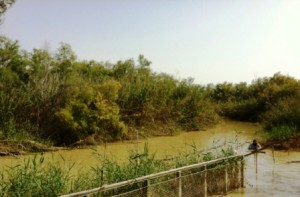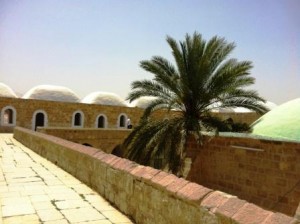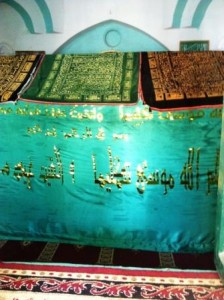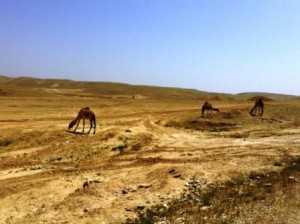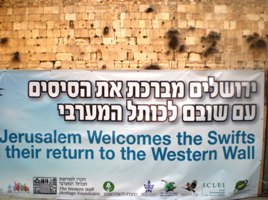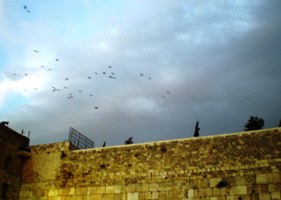Mahane Yehuda is the main outdoor food market in Jerusalem. It is known for its wonderful assortment of fresh fruit and vegetables, baked goods and spices. Over the past few years, it has become gentrified and has spawned a proliferation of boutique style eateries and up-market stores.
The area was first developed during the Turkish rule of the city, when a kind of ad hoc market sprang up on an empty plot of land near the horse and carriage stop which brought tourists to Jerusalem from Jaffa. Today’s light rail stops in almost the same spot and brings visitors in their droves to do their shopping.
Under the aegis of the British, the market became a more permanent feature with transactions taking place from established stalls. The British also imposed various health and safety rules. They specified the size of the shops and how far away from the entrance a seller was permitted to display his goods. They also decreed the shops had to be of a uniform style and that all shop fronts had to be made out of the local Jerusalem stone. This is an ordinance we still keep in the city, which does much to improve the overall appearance of the buildings. The first public toilets in Jerusalem were also established in Mahane Yehuda. 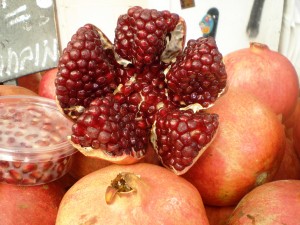
After the Arab riots of the 1920s, locals from the newly formed neighbourhoods outside the Old City walls replaced the original Arab fellahin as vendors. Today you can find representatives from many different communities selling their wares. Your senses are assaulted by a multitude of colours and scents, tastes and cries. Depending on what season of the year you are visiting you can purchase ruby red pomegranates in the run up to Rosh Hashana (the Jewish New Year), juicy watermelon (in the hot summer) or witness the kaparot ceremony before Yom Kippur, (the Day of Atonement). A live chicken is rotated around the buyer’s head three times, and by so doing he symbolically transfers his sins on to the bird. The chicken is then ritually slaughtered in atonement and the bird is donated to a needy family. The more squeamish use a sum of money instead of a live chicken and then donate it to charity. A controversial custom over the years, with many rabbis speaking out against it, the live bird version of kaparot is less widely practiced in modern times than in days of yore, but Mahane Yehuda, as well as in some more orthodox enclaves of the city, is a place where the tradition still takes place.
A recent walk around the vicinity of the market proved that another ancient custom is still alive and well. Flyers, pasted to the local notice board advertising pigeons for sale, caught my eye. The pigeons are used to cure those who suffer from jaundice. The pigeon is placed on the stomach of the sick person in the area of the navel. A male pigeon is required for a man and a female one for a woman. The pigeon somehow “absorbs” the jaundice and the patient is cured. The pigeon, however, is less fortunate and dies. Whilst the rationalists amongst us might remain skeptical, this remedy is still very much in vogue, particularly amongst certain ultra-orthodox segments of society.
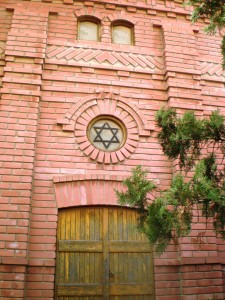 An interesting building on Yosef Schwartz Street is the Sfas Emes Yeshiva, a replica of the Gur yeshiva as it was in Gora-Kalwarja in Poland, a major hassidic centre until World War II. The third Admor (head) of the Gur hassidim, Rebbe Mordecai Avraham Alter, escaped to Palestine from Poland during the war and lived in Geula. During the War of Independence in 1948, he moved to the area of Mahane Yehuda as it was considered safer. He lived in this building in rooms on the third floor. However, when serious shooting began nearby, the Rebbe who had been ill for several years and was unable to walk unaided, was brought down to the first floor so he wouldn’t be so isolated if he needed help. He is said to have turned to his students and said “I want to go up”. They understood him to mean he wanted to be returned to the third floor, in actual fact, he meant he wanted to go up to the great yeshiva in the sky, and he died very shortly after. Due to the ongoing war, he could not be buried in the Jewish cemetery on the Mount of Olives, so he was “temporarily” buried in the back courtyard of the yeshiva. After the war it was decided not to move him, so the grave is still there. In fact, you can see two graves, as his son Rebbe Pinchas Menachem Alter, who passed away in 1996, is buried next to him because he said he wanted to be interred beside his father. The decision was opposed by the municipality who were concerned about a health hazard in the now developed city, but the funeral went ahead anyway. A special structure was built over the graves and they are frequently visited by Hassidim and the occasional group of tourists.
An interesting building on Yosef Schwartz Street is the Sfas Emes Yeshiva, a replica of the Gur yeshiva as it was in Gora-Kalwarja in Poland, a major hassidic centre until World War II. The third Admor (head) of the Gur hassidim, Rebbe Mordecai Avraham Alter, escaped to Palestine from Poland during the war and lived in Geula. During the War of Independence in 1948, he moved to the area of Mahane Yehuda as it was considered safer. He lived in this building in rooms on the third floor. However, when serious shooting began nearby, the Rebbe who had been ill for several years and was unable to walk unaided, was brought down to the first floor so he wouldn’t be so isolated if he needed help. He is said to have turned to his students and said “I want to go up”. They understood him to mean he wanted to be returned to the third floor, in actual fact, he meant he wanted to go up to the great yeshiva in the sky, and he died very shortly after. Due to the ongoing war, he could not be buried in the Jewish cemetery on the Mount of Olives, so he was “temporarily” buried in the back courtyard of the yeshiva. After the war it was decided not to move him, so the grave is still there. In fact, you can see two graves, as his son Rebbe Pinchas Menachem Alter, who passed away in 1996, is buried next to him because he said he wanted to be interred beside his father. The decision was opposed by the municipality who were concerned about a health hazard in the now developed city, but the funeral went ahead anyway. A special structure was built over the graves and they are frequently visited by Hassidim and the occasional group of tourists.
Another yeshiva, Etz Hayim, was originally located in the Old City. However, once people started to move out from the confines of the city walls they bought a property next to the present day market on Jaffa Road. Apparently the yeshiva was bought for a bargain price as the building was said to be haunted. Despite their good deal, the institution was still short of money so they built a series of shops which they rented out and used the income to finance stipends for their students. If you walk down Etz Hayim Street (the main thoroughfare of the covered market) from Jaffa Road, you will see that the shops on the left hand side of the market have back windows which face into what was the yeshiva courtyard. In the morning, vendors could come into the courtyard and unload their supplies right outside the back window of their shop. The yeshiva moved out of the building a couple of years ago and rumour has it that two twenty eight story towers are going to be built in its place.
The area around the market is an interesting mixture of old and new styles. As the neighbourhood keeps pace with modernity, another feature which is worth noticing is the artwork. The trompe d’oeil fresco on the side of 70 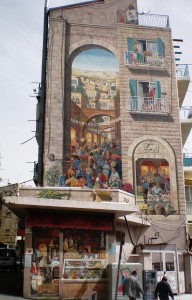 Agrippas Street, showing a lively market scene is one of a number of murals around the city centre. Created by the French artistic group “Cite de la Creation”, the ethos behind the artwork is to upgrade run-down areas by recapturing local history through art. In so doing they hope to give the residents a sense of pride in their surroundings. The artists spoke to the market traders and tried to incorporate some of their stories into the painting itself. Another example of their art can be found in the Mahane Yehuda car park. The mural is painted on an historic building, which was part of the campus of the Alliance school, and depicts the same structure it as it looked some 150 years ago.
Agrippas Street, showing a lively market scene is one of a number of murals around the city centre. Created by the French artistic group “Cite de la Creation”, the ethos behind the artwork is to upgrade run-down areas by recapturing local history through art. In so doing they hope to give the residents a sense of pride in their surroundings. The artists spoke to the market traders and tried to incorporate some of their stories into the painting itself. Another example of their art can be found in the Mahane Yehuda car park. The mural is painted on an historic building, which was part of the campus of the Alliance school, and depicts the same structure it as it looked some 150 years ago.
In addition, in the Iraqi section of the market a project of urban art showcases the talent of local artists. Tabula Rasa, Latin for “blank slate”, presents an eclectic selection of murals in a collaboration between the city’s art students, the municipality and the market. The project features twenty artists and their work can be found on any available space including garbage cans, window shutters and exposed walls, in Dekel, HaShikma and Beit Yaacov streets. It is worth taking the opportunity to amble along there and enjoy some of the fun and funky talent on display.



